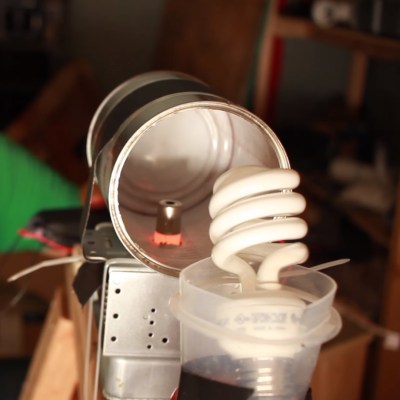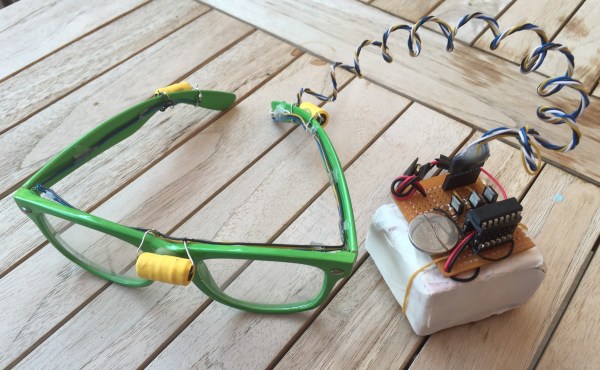Almost exactly one year ago, [Kreosan] published a video detailing an EM “weapon” built out of three magnetrons, some batteries, and a taser. It all seemed a bit too good to be true, so [Allen] decided to try and replicate the results for himself.
[Kreosan]’s original video was impressive, showing everything from home stereos to a humble moped exploding when in the presence of their powerful device. However, many of those watching the video doubted the footage. Most criticism centered around the nature of the power supply to the magnetron falling short of the usual 700-1000W seen in a microwave oven.

[Allen] starts by experimenting with a single magnetron, successfully using it to light a compact fluorescent bulb at a range of a few centimeters. Scaling up to the full triple magnetron setup with a cardboard and foil feedhorn, [Allen] is, at best, able to crash a calculator at a distance of a few feet.
The microwaves cause no explosions, and the device doesn’t seem to have anywhere near the 50-foot range claimed by [Kreosan] for their device. [Allen] puts forth the theory that the explosions seen in the original footage are far more likely to be from small firecrackers rather than any electronic components dying from microwaves.
Overall it’s a solid attempt to recreate someone else’s work to verify the results, a cornerstone of science. We did bristle somewhat at the valiant 18650 being described as a “vape battery”, however. For more microwave goodness, check out this attempt to recreate the TSA’s body scanners.













